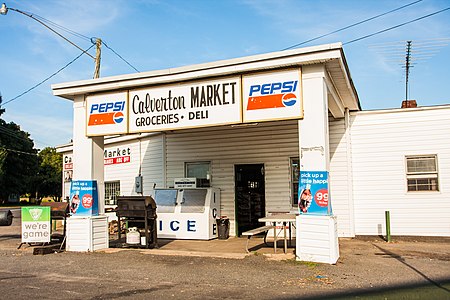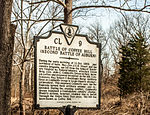Calverton Historic District
Fauquier County, Virginia Registered Historic Place stubsHistoric districts in Fauquier County, VirginiaHistoric districts on the National Register of Historic Places in VirginiaNRHP infobox with nocatNational Register of Historic Places in Fauquier County, Virginia ... and 1 more
Use mdy dates from August 2023

Calverton Historic District is a national historic district located at Calverton, Fauquier County, Virginia. It encompasses 69 contributing buildings and 2 contributing structures in the rural crossroads village of Calverton. They include three dwellings, a church, a school, and three stores. Notable buildings include a large farmstead, multiple dwellings, several commercial buildings, Wesleyan Methodist Church, the former high school now converted into apartments, and the old abandoned post office building.It was listed on the National Register of Historic Places in 2010.
Excerpt from the Wikipedia article Calverton Historic District (License: CC BY-SA 3.0, Authors, Images).Calverton Historic District
Westwood Road,
Geographical coordinates (GPS) Address Nearby Places Show on map
Geographical coordinates (GPS)
| Latitude | Longitude |
|---|---|
| N 38.626388888889 ° | E -77.670555555556 ° |
Address
Westwood Road
Westwood Road
20138
Virginia, United States
Open on Google Maps





